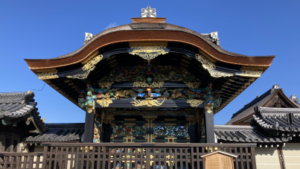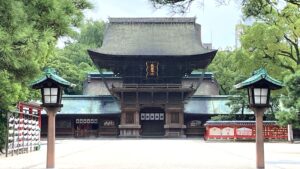Kashima Jingu Shrine Enshrines the Diety of War, Takemikazuchi
Kashima Jingu Shrine, located in Ibaraki prefecture near the Pacific Ocean, is one of the oldest shrines in eastern Japan. It was established in 660B.C., the first year of the reign of the mythological Emperor Jinmu (神武天皇). It enshrines Takemikazuchi Okami (武甕槌大神), revered as the most powerful deity in Japanese mythology, as described in Nihon Shoki, The Chronicles of Japan, and Kojiki, The Records of Ancient Matters.

The Kashima's God of War, Takemikazuchi Okami
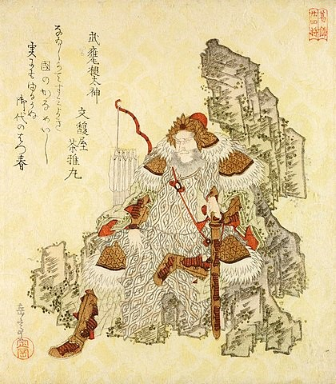
As the god of war, Takemikazuchi was highly revered by many warlords, including Takeda Shingen and Tokugawa Ieyasu. The okumiya (former main shrine) of Kashima Jingu Shrine was dedicated by Tokugawa Ieyasu following his victory at the Battle of Sekigahara. The present shrine was dedicated by Tokugawa Hidetada, the second shogun of the Tokugawa Shogunate, while the tower gate was dedicated by Tokugawa Yorifusa (1603-1661, 徳川頼房), Ieyasu's 11th son and the first lord of the Mito domain. Kashima Jingu Shrine is also renowned for producing Tsukahara Bokuden (1489-1571, 塚原卜伝), a legendary, undefeated sword master of the Warring States period. Bokuden spent 1,000 days at the shrine, where he practiced asceticism, received divine guidance from the deity of Kashima, and passed down the Ichino-Tachi (the sword that brings peace to the land) to numerous military commanders, including Ashikaga Yoshiteru (1536-1565, 足利義輝), shogun of the Muromachi Shogunate.
Two Achievements of Takemikazuchi
Nihon Shoki and Kojiki introduce Takemikazuchi’s two crucial achievements in the foundation of ancient Japan. One is Kuni-Yuzuri, the transfer land of Izumo. The other one is Protecting Emperor Jinmu with his sword.
Kuniyuzuri, Transfer Land of Izumo
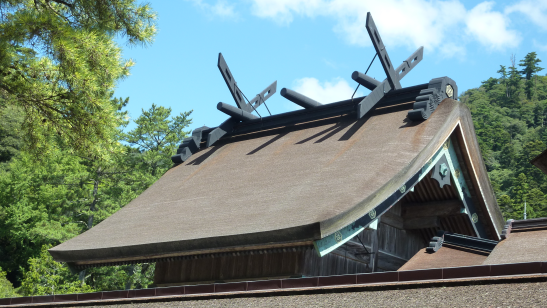
(Source: Izumo Taisha)
Two deities, Takemikazuchi and Futsunushi, were sent to confront the powerful governor, Okuninonushi, in his homeland of Izumo, demanding that he hand over control of the nation at sword point into the land, under the command of Amaterasu Omikami, the sun deity. Okuninonushi accepted to surrender control in exchange for constructing a pretty large grand shrine, now known as Izumo Taisha Shrine. Following this success, Amaterasu Omikami ordered her grandson, Ninigi-no-mikoto, to unify the country. Ninigi-no-mikoto’s great-grandson was the first Emperor Jinmu of Japan.
Protecting Emperor Jinmu
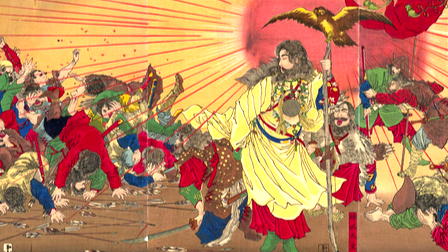
Afterward, Takemikazuchi supported Kamuyamato-Iwarebiko (神日本磐余彦), who would later become the first Emperor Jinmu of Japan, by gifting him the sword known as Futsu-no-Mitama. The sword aided Kamuyamato-Iwarehiko throughout his great Eastern Expedition from Kyushu to Nara, where he faced numerous battles and challenges against the regional governors. Upon reaching the foot of Mt.Unebi in southern Nara, Kamuyamato-Iwarehiko was crowned by the first Emperor Jinmu. After the accession to the throne of Emperor Jinmu, the sword was kept in court for generations before being enshrined on the sacred grounds of Isonokami Jingu Shrine. Approximately 1,300 years ago, the straight sword of the second generation was crafted, designated as a national treasure, and preserved at the Kashima Jingu Shrine. It is known as the Kurourushi Tairamon Tachi Koshirae (黒漆平文太刀拵), Black Lacquer Flat Ornamented Tachi Mount.
Two Ancient Shrines Standing at Sunrise and Sunset
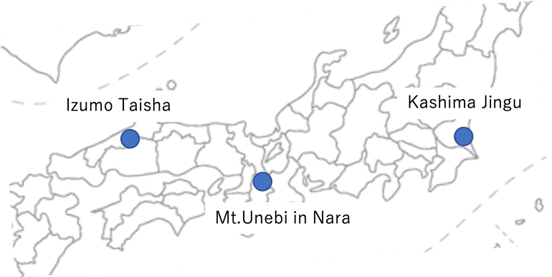
The geographical relationship between the Kashima and Izumo shrines exists. These two shrines can have the longest distance on the map of Japan, meaning the eastern Kashima and the western Izumo. In ancient days, people believed that deities came to this world from the east beyond the sea and hid in the west beyond the sea, aligning the orbit of the sun from the east to the west. And the deity regenerates its spirit through hiding. The Takemikazuchi deity sits facing the east, and the Okuninonushi deity sits facing the west, though almost all deities in Japan sit facing the south.
From this, it seems that the ancient Japanese recognized the daily movement of the sun rising and setting as essential to the rebirth of new life as part of the cycle of life and death.
Takemikazuchi Descends to Mount Mikasayama in Nara
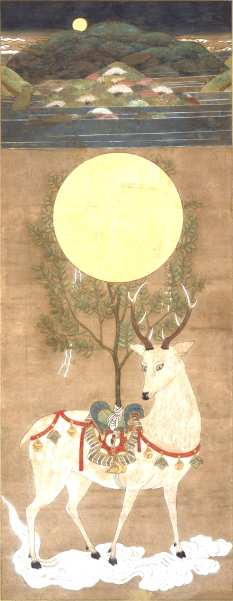
In 710, the capital was moved to Heijo-kyo in Nara, marking the beginning of the Nara period (710-794). Fujiwara Fuhito, the top court official, transferred the divided spirit of Takemikazuchi Okami, the deity of the Fujiwara family, to Mt. Mikasayama in Nara and enshrined him in the first hall of the Kasuga Taisha Shrine, calling him the Kasuga deity. At that time, Takemikazuchi Okami came from Kashima Jingu Shrine riding a deer. Kashima and Kasuga magnify the deer as sacred messengers of the deity.
As just described, Takemikazuchi served a vital role in establishing ancient Japan governed by the emperor, which is carried through to the present in different forms. Please enjoy walking in the shrine about the size of 15 Tokyo Dome baseball grounds with a large forest filled with more than 600 kinds of trees, including giant trees such as Japanese cedar, pine, and so on.
Recommendations to visit
Kashima Jingu Shrine
- Access: 2 hours by highway bus from Tokyo Station on the Kashima Liner. Get off the Bus Stop, Kashima Jingu (鹿島神宮).
Izumo Taisha Shrine
- Access (Train): 25 minutes from JR Izumoshi Station. Take the Ichinata Bus to "Seimon-mae (正門前)," then a 10-minute walk to Kawato Station. 11 minutes by train to "Izumotaisha-mae (出雲大社前)"
- Access (Air/Bus): 1 hour from Izumo Enmusubi Airport to Izumo Taisha by Ichibata Direct Bus

